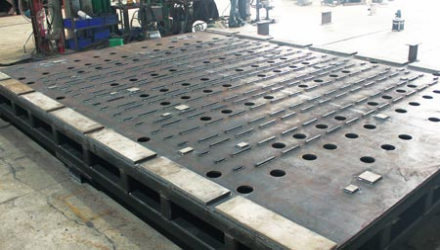Technology

How to determine whether a sheet metal part should be assembled or welded
The decision of whether to choose assembly or welding in the sheet metal fabrication process is a key factor that determines the structural performance and manufacturing efficiency of the workpieces. This choice will affect the load-bearing capacity, precision control, production costs, ease of maintenance, and aesthetic requirements of the components. Based on different needs, welding and assembly have different applications in sheet metal fabrication. Here is an in-depth analysis of the choice between assembly or welding for sheet metal components:
1. Structural Strength and Load-Bearing Capacity
For sheet metal components that require high load-bearing capacity, welding is the ideal choice. The welding process joins metal parts securely, providing excellent shear strength and structural rigidity, which is crucial for components that need to bear heavy loads or have high durability. For example, welded frame components are commonly used in industrial equipment, machinery, and other applications to ensure structural stability and long-term reliable operation. In contrast, assembly (such as bolt or rivet connections) is more suitable for applications with medium load requirements and where extreme stress or loads are not expected.
2. Precision Control and Risk of Deformation
The high temperatures involved in the welding process may cause deformation or material shrinkage in sheet metal components, which can affect the dimensional and positional accuracy of parts with precise tolerance requirements. In this case, assembly methods can effectively avoid thermal stress, ensuring the accuracy and stability of the assembled components, making them suitable for high-precision sheet metal workpieces, such as housings for precision instruments or mold components.
3. Maintainability and Disassemblability
If components need to be repaired, replaced, or disassembled later, assembly (such as bolted connections) is more convenient because it allows for easy disassembly and reassembly. In contrast, welded frame components are permanent structures that are difficult to disassemble, and if maintenance is required, it may necessitate damaging the entire welded structure, which is not ideal for equipment that requires frequent servicing.
4. Production Costs and Efficiency
Welding typically requires higher equipment investment and specialized skills, making it suitable for small-batch or customized production of high-strength components. For mass production of sheet metal parts, assembly is more cost-effective, especially in standardized and automated manufacturing processes. For example, in high-output mechanical equipment or home appliance products, assembly can significantly increase production efficiency and lower the cost per unit.
5. Aesthetics and Surface Treatment Requirements
Welding may leave weld seams, thermal deformation, or oxidation marks, requiring additional surface treatment (such as grinding, sandblasting, painting, etc.) to improve the appearance. For sheet metal components with high aesthetic demands, particularly for display items or products requiring high surface smoothness, assembly has an advantage because the assembly process does not cause thermal deformation, allowing the metal surface to remain intact and smooth.
6. Environmental Durability and Application Scenarios
For sheet metal components used in harsh environments, such as high temperatures, high humidity, or corrosive conditions, welded components generally offer better protection due to their sealability and durability. Welded joints are less prone to water, air infiltration, or corrosion, making them suitable for applications requiring high stability and durability, such as welded frame components. On the other hand, assembled structures may require additional protective treatments to prevent corrosion or sealing issues.
The choice between welding and assembly depends on the specific needs of the sheet metal fabrication workpieces. If high structural strength, precision control, and durability are required, welded frame components are the best choice. However, if the need is for disassembly, flexibility, and cost-effectiveness, assembly methods are more suitable. Understanding these decision-making factors helps in making the best choice during the manufacturing process and ensures the optimal balance of performance, cost, and quality in the final product.